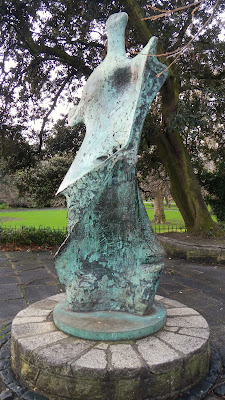Earlier this year I was awarded a commission to create a bronze statue to commemorate the making of the film "The Quiet Man" in Cong, County Mayo. The first problem I had to overcome was to find a model tall enough to pose as John Wayne. After some searching I hired a model from Galway named Florian who was 6ft 5in. My wife Jacinta modelled as Maureen O`Hara and both models were very patient as I took photographs and measurements in the studio.
I then proceeded to make the steel armature which would support the initial artwork
and then applied the clay which forms the artwork.
and then applied the clay which forms the artwork.
Next came the mould (below left). When the plaster mould sections are removed they will be used to paint the wax into. These wax sections are then used in the "lost wax process" which in principal dates back
Once the casting is done and each section is welded together, the supporting internal steel frame is inserted and the metalwork or "chasing" is done (above right). Then the colour is applied using a process called patination. Link to video on patination I made.
Lastly there is the installation and the unveiling. I usually don`t like unveilings but the people of Cong went to a lot off effort to make this an event and were very kind and appreciative. Below are a few photos with some local people including extras who appeared in the film in 1951.
 |
| Photo Andrew Downes |
 |
| Photo Andrew Downes |
 |
| Photo Liz King |




























